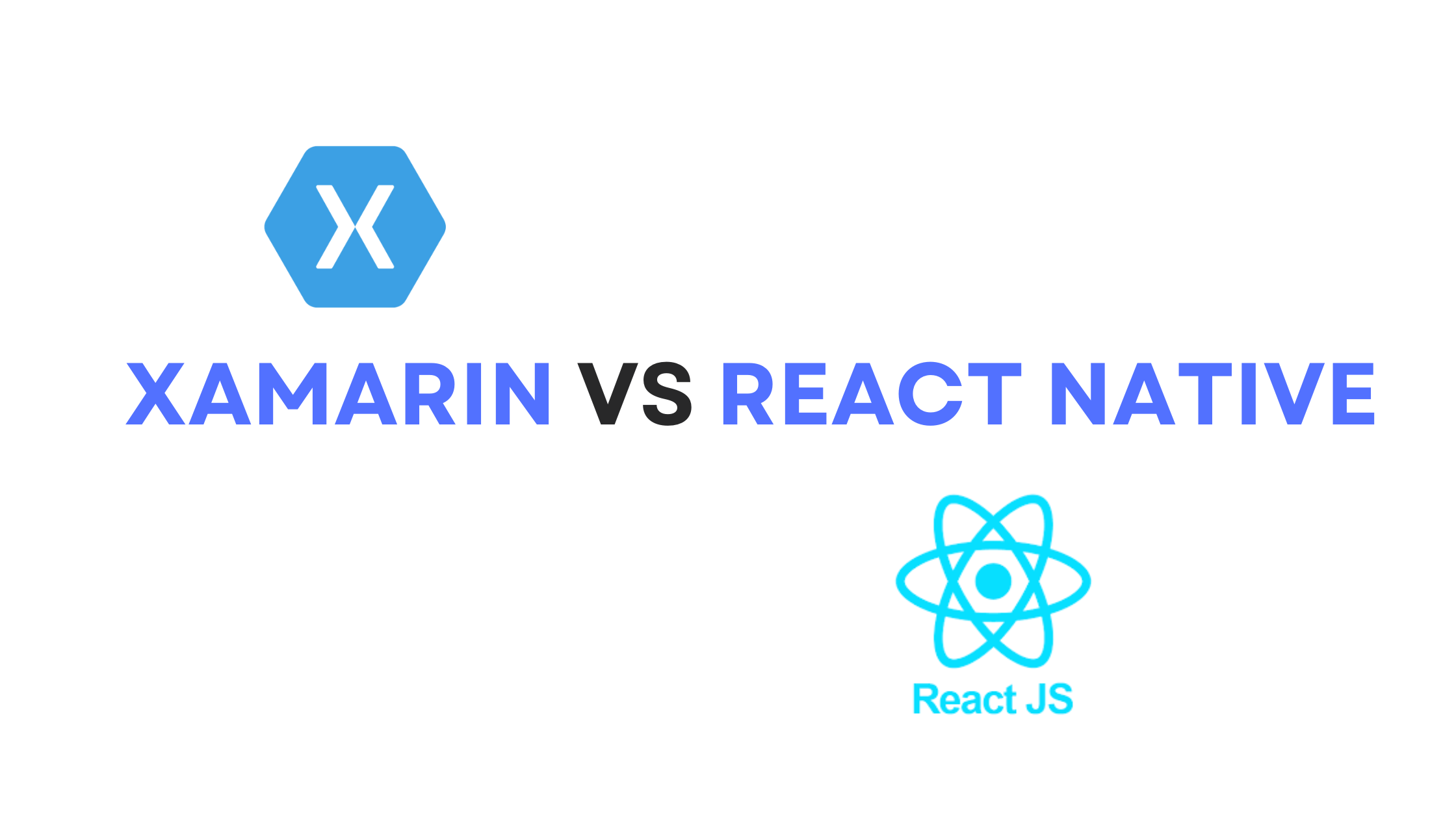Nearshore software outsourcing refers to delegating software development tasks or IT-related projects to third-party companies located in neighboring or nearby countries. Unlike offshore outsourcing, where businesses collaborate with firms in distant locations, nearshore outsourcing focuses on partnering with geographically closer companies. This proximity often results in similar time zones, cultural affinities, and easier communication, making the collaboration smoother and more efficient.
Importance of Nearshore Software Outsourcing

- Enhanced Communication: With similar time zones, teams can easily synchronize their working hours, leading to real-time communication and faster decision-making processes.
- Cultural Similarities: Geographical closeness often brings cultural similarities. This can lead to better understanding, fewer misunderstandings, and a more harmonious working relationship.
- Cost-Effective: Nearshore outsourcing can offer the cost benefits of outsourcing without the challenges of distant offshore partners. It often strikes a balance between cost and quality.
- Flexibility and Scalability: Nearshore partners allow businesses to quickly scale up or down based on project requirements without significant investments in infrastructure or recruitment.
- Risk Mitigation: Working with a nearshore partner can reduce risks associated with language barriers, legal discrepancies, and time zone differences.
- Faster Time-to-Market: Proximity and efficient communication can accelerate project timelines, enabling businesses to launch their products or services more quickly.
Benefits of Nearshore Software Outsourcing
1. Cost Efficiency
- Reduced Overheads: By outsourcing software development to nearshore partners, companies can save on infrastructure, recruitment, and training costs.
- Flexible Pricing Models: Nearshore providers often offer flexible pricing models that can be tailored to the specific needs and budgets of the client, ensuring cost-effective solutions.
2. Higher Return on Investment (ROI)
- Quality Work at Competitive Rates: Nearshore partners provide high-quality services at rates that are often more competitive than local market rates, leading to a higher ROI.
- Focus on Core Competencies: Outsourcing non-core tasks allows businesses to concentrate on their primary functions, leading to increased profitability and growth.
3. Organizational Efficiency
- Resource Allocation: Outsourcing allows companies to allocate their in-house resources more efficiently, focusing on strategic initiatives and core operations.
- Quick Scalability: Nearshore partners provide the flexibility to scale operations up or down based on project demands without the need for long-term commitments.
4. Effective Communication
- Time Zone Alignment: Geographical proximity ensures overlapping working hours, facilitating real-time communication and collaboration.
- Reduced Language Barriers: Nearshore regions often share linguistic similarities or strongly command the client’s language, leading to clearer communication.
5. Similar Work Culture and Practice
- Cultural Affinity: Being in neighbouring or nearby countries often means shared cultural values, business etiquette, and work ethics, ensuring a smoother collaboration.
- Streamlined Processes: Similar work practices and methodologies between the client and the nearshore partner can lead to a more integrated and efficient workflow.
Key Metrics to Look for When Considering Nearshore Software Companies
1. Proximity to the Host Country
- Travel Time: Measure the average flight duration between the host country and the nearshore company’s location. Shorter travel times can facilitate easier in-person meetings and visits.
- Time Zone Overlap: Calculate the number of overlapping working hours between the two locations. A higher overlap ensures synchronous communication and collaboration.
2. Technical Skills
- Technology Stack Proficiency: Evaluate the company’s expertise in the specific technologies and platforms relevant to your project. This can be measured by certifications, past projects, and client testimonials.
- Innovation and R&D: Assess the company’s commitment to research and development, which can indicate its ability to stay updated with the latest technological advancements.
- Quality Assurance: Check for the presence of a robust QA process and the tools they use to ensure the delivery of high-quality software.
3. Cultural Compatibility
- Work Ethic and Values: Survey the company’s core values, mission, and vision to determine if they align with your organization’s culture.
- Feedback and Collaboration: Measure the company’s openness to feedback and its collaborative approach. This can be gauged through client reviews and case studies.
- Problem-Solving Approach: Evaluate how the company handles challenges and conflicts. A proactive and solution-oriented approach is a positive indicator of cultural compatibility.
4. Minimum Language Barriers
- Language Proficiency: Assess the language skills of the company’s team, especially in the languages spoken in the host country. This can be measured through certifications, tests, or interviews.
- Communication Tools: Check the tools and platforms the company uses for communication. Advanced tools with translation features can help bridge minor language gaps.
- Training and Development: Investigate if the company invests in language training for its employees, ensuring smoother communication in the long run.
Advantages of Nearshore Software Development
Resolves the Cycle of Additional Workforce Requirements
- Flexible Staffing: Nearshore development allows businesses to quickly onboard additional resources based on project demands, eliminating the need for permanent hires for short-term requirements.
- Talent Pool Access: Companies gain access to a broader talent pool without the constraints of local skill shortages, ensuring the right expertise for specific project needs.
Better Work Efficiency
- Focused Expertise: Nearshore companies often specialize in specific domains or technologies, ensuring that experts handle tasks, leading to higher-quality outputs.
- Reduced Overheads: By leveraging nearshore teams, businesses can reduce the overheads associated with infrastructure, training, and recruitment.
No Hidden Costs
- Transparent Pricing: Nearshore partners typically offer clear and upfront pricing structures, ensuring businesses know the costs involved without any surprises.
- Predictable Budgeting: Businesses can better manage their project budgets with clear contracts and service level agreements.
Shared Time Zone
- Synchronous Collaboration: A shared or similar time zone ensures that both the in-house team and the nearshore team work simultaneously, leading to real-time communication and faster decision-making.
- Reduced Delays: Overlapping working hours means that queries, feedback, and approvals can be addressed promptly, reducing project delays.
Operational Efficiency
- Streamlined Processes: Nearshore partners often adopt best practices and standardized processes, ensuring consistent and efficient project execution.
- Resource Optimization: Outsourcing non-core tasks allows in-house teams to focus on strategic initiatives, optimizing the use of internal resources.
More Control Over the Project Progress
- Regular Updates: Proximity and effective communication channels ensure that businesses receive regular project milestones and progress updates.
- Direct Involvement: With easier access to the nearshore team, businesses can be more directly involved in the development process, ensuring that the project aligns with their vision and objectives.
Disadvantages of Nearshore Software Development
Communication for Longer Durations
- Extended Discussions: While nearshore development offers better communication due to shared time zones, it can sometimes lead to prolonged discussions and meetings, consuming valuable time.
- Dependency on Digital Tools: Even with geographical proximity, most communication is still reliant on digital tools, which can sometimes face technical glitches or downtimes.
Project Technicalities
- Complex Integration: Integrating the work of the nearshore team with the in-house team or other vendors can sometimes be complex, especially if different methodologies or tools are used.
- Knowledge Transfer Delays: There might be a lag in transferring specific technical nuances or business logic from the core team to the nearshore team, leading to potential misunderstandings.
Selecting the Right Tech Stack
- Mismatched Expertise: The nearshore partner might not always have expertise in the specific technology stack preferred by the client, leading to a learning curve or the need to compromise on tech choices.
- Rapid Technological Changes: The pace of technological advancement might mean that the chosen tech stack becomes obsolete during the project’s duration, leading to potential rework.
Cross Collaboration
- Coordination Challenges: Managing multiple teams, especially if there are multiple outsourcing partners involved, can lead to coordination challenges and potential bottlenecks.
- Cultural Differences: Even with geographical proximity, there might still be cultural differences that can impact collaboration and team dynamics.
Quality Concerns
- Inconsistent Standards: There’s a risk that the nearshore partner might not adhere to the same quality standards or best practices as the client, leading to potential quality issues.
- Over-reliance on External Teams: Relying heavily on external teams for critical project components can sometimes lead to compromises in quality, especially if there’s inadequate oversight.
FAQS
1. What is Nearshore Software Outsourcing?
- Answer: Nearshore software outsourcing refers to the practice of delegating software development or IT-related tasks to third-party companies located in neighboring or nearby countries to the client’s location. This approach offers the benefits of geographical proximity, such as similar time zones and cultural affinities.
2. How does Nearshore differ from Offshore and Onshore Outsourcing?
- Answer: Onshore outsourcing involves partnering with companies within the same country. Offshore outsourcing refers to collaborating with firms in distant countries, often on different continents. Nearshore outsourcing, on the other hand, focuses on companies located in neighboring or nearby countries, offering a balance between the two in terms of cost, communication, and cultural compatibility.
3. What are the main advantages of Nearshore Software Outsourcing?
- Answer: Key advantages include cost efficiency, enhanced communication due to similar time zones, cultural and linguistic similarities, operational efficiency, and more control over project progress.
4. Are there any challenges or disadvantages to Nearshore Outsourcing?
- Answer: Yes, potential challenges include communication for longer durations, complexities in project technicalities, selecting the right tech stack, coordination in cross-collaboration, and concerns about quality consistency.
5. How do I choose the right Nearshore Software Outsourcing partner?
- Answer: Consider factors like the company’s technical expertise, past client reviews, cultural compatibility, communication proficiency, and approach to project management. It’s also essential to evaluate their experience in your industry and the technologies relevant to your project.
Nearshore software outsourcing refers to delegating software development tasks or IT-related projects to third-party companies located in neighboring or nearby countries. Unlike offshore outsourcing, where businesses collaborate with firms in distant locations, nearshore outsourcing focuses on partnering with geographically closer companies. This proximity often results in similar time zones, cultural affinities, and easier communication, making the collaboration smoother and more efficient.
Importance of Nearshore Software Outsourcing
- Enhanced Communication: With similar time zones, teams can easily synchronize their working hours, leading to real-time communication and faster decision-making processes.
- Cultural Similarities: Geographical closeness often brings cultural similarities. This can lead to better understanding, fewer misunderstandings, and a more harmonious working relationship.
- Cost-Effective: Nearshore outsourcing can offer the cost benefits of outsourcing without the challenges of distant offshore partners. It often strikes a balance between cost and quality.
- Flexibility and Scalability: Nearshore partners allow businesses to quickly scale up or down based on project requirements without significant investments in infrastructure or recruitment.
- Risk Mitigation: Working with a nearshore partner can reduce risks associated with language barriers, legal discrepancies, and time zone differences.
- Faster Time-to-Market: Proximity and efficient communication can accelerate project timelines, enabling businesses to launch their products or services more quickly.
Benefits of Nearshore Software Outsourcing
1. Cost Efficiency
- Reduced Overheads: By outsourcing software development to nearshore partners, companies can save on infrastructure, recruitment, and training costs.
- Flexible Pricing Models: Nearshore providers often offer flexible pricing models that can be tailored to the specific needs and budgets of the client, ensuring cost-effective solutions.
2. Higher Return on Investment (ROI)
- Quality Work at Competitive Rates: Nearshore partners provide high-quality services at rates that are often more competitive than local market rates, leading to a higher ROI.
- Focus on Core Competencies: By outsourcing non-core tasks, businesses can concentrate on their primary functions, leading to increased profitability and growth.
3. Organizational Efficiency
- Resource Allocation: Outsourcing allows companies to allocate their in-house resources more efficiently, focusing on strategic initiatives and core operations.
- Quick Scalability: Nearshore partners provide the flexibility to scale operations up or down based on project demands without the need for long-term commitments.
4. Effective Communication
- Time Zone Alignment: Geographical proximity ensures overlapping working hours, facilitating real-time communication and collaboration.
- Reduced Language Barriers: Nearshore regions often share linguistic similarities or have a strong command of the client’s language, leading to clearer communication.
5. Similar Work Culture and Practice
- Cultural Affinity: Being in neighboring or nearby countries often means shared cultural values, business etiquette, and work ethics, ensuring a smoother collaboration.
- Streamlined Processes: Similar work practices and methodologies between the client and the nearshore partner can lead to a more integrated and efficient workflow.
Key Metrics to Look for When Considering Nearshore Software Companies
1. Proximity to the Host Country
- Travel Time: Measure the average flight duration between the host country and the nearshore company’s location. Shorter travel times can facilitate easier in-person meetings and visits.
- Time Zone Overlap: Calculate the number of overlapping working hours between the two locations. A higher overlap ensures synchronous communication and collaboration.
2. Technical Skills
- Technology Stack Proficiency: Evaluate the company’s expertise in the specific technologies and platforms relevant to your project. Certifications, past projects, and client testimonials can measure this.
- Innovation and R&D: Assess the company’s commitment to research and development, indicating its ability to stay updated with the latest technological advancements.
- Quality Assurance: Check for a robust QA process and the tools they use to ensure the delivery of high-quality software.
3. Cultural Compatibility
- Work Ethic and Values: Survey the company’s core values, mission, and vision to determine if they align with your organization’s culture.
- Feedback and Collaboration: Measure the company’s openness to feedback and its collaborative approach. This can be gauged through client reviews and case studies.
- Problem-Solving Approach: Evaluate how the company handles challenges and conflicts. A proactive and solution-oriented approach is a positive indicator of cultural compatibility.
4. Minimum Language Barriers
- Language Proficiency: Assess the language skills of the company’s team, especially in the languages spoken in the host country. This can be measured through certifications, tests, or interviews.
- Communication Tools: Check the tools and platforms the company uses for communication. Advanced tools with translation features can help bridge minor language gaps.
- Training and Development: Investigate if the company invests in language training for its employees, ensuring smoother communication in the long run.
Advantages of Nearshore Software Development
1. Resolves the Cycle of Additional Workforce Requirements
- Flexible Staffing: Nearshore development allows businesses to quickly onboard additional resources based on project demands, eliminating the need for permanent hires for short-term requirements.
- Talent Pool Access: Companies gain access to a broader talent pool without the constraints of local skill shortages, ensuring the right expertise for specific project needs.
2. Better Work Efficiency
- Focused Expertise: Nearshore companies often specialize in specific domains or technologies, ensuring that tasks are handled by experts, leading to higher-quality outputs.
- Reduced Overheads: By leveraging nearshore teams, businesses can reduce the overheads associated with infrastructure, training, and recruitment.
3. No Hidden Costs
- Transparent Pricing: Nearshore partners typically offer clear and upfront pricing structures, ensuring businesses know the costs involved without any surprises.
- Predictable Budgeting: Businesses can better predict and manage their project budgets with clear contracts and service level agreements.
4. Shared Time Zone
- Synchronous Collaboration: A shared or similar time zone ensures that both the in-house and nearshore teams work simultaneously, leading to real-time communication and faster decision-making.
- Reduced Delays: Overlapping working hours means that queries, feedback, and approvals can be addressed promptly, reducing project delays.
5. Operational Efficiency
- Streamlined Processes: Nearshore partners often adopt best practices and standardized processes, ensuring consistent and efficient project execution.
- Resource Optimization: Outsourcing non-core tasks allows in-house teams to focus on strategic initiatives, optimizing the use of internal resources.
6. More Control Over the Project Progress
- Regular Updates: Proximity and effective communication channels ensure that businesses receive regular updates on project milestones and progress.
- Direct Involvement: With easier access to the nearshore team, businesses can be more directly involved in the development process, ensuring that the project aligns with their vision and objectives.
Disadvantages of Nearshore Software Development
1. Communication for Longer Durations
- Extended Discussions: While nearshore development offers better communication due to shared time zones, it can sometimes lead to prolonged discussions and meetings, consuming valuable time.
- Dependency on Digital Tools: Even with geographical proximity, most communication is still reliant on digital tools, which can sometimes face technical glitches or downtimes.
2. Project Technicalities
- Complex Integration: Integrating the work of the nearshore team with the in-house team or other vendors can sometimes be complex, especially if different methodologies or tools are used.
- Knowledge Transfer Delays: There might be a lag in transferring specific technical nuances or business logic from the core team to the nearshore team, leading to potential misunderstandings.
3. Selecting the Right Tech Stack
- Mismatched Expertise: The nearshore partner might not always have expertise in the specific technology stack preferred by the client, leading to a learning curve or the need to compromise on tech choices.
- Rapid Technological Changes: The pace of technological advancement might mean that the chosen tech stack becomes obsolete during the project’s duration, leading to potential rework.
4. Cross Collaboration
- Coordination Challenges: Managing multiple teams, especially if multiple outsourcing partners are involved, can lead to coordination challenges and potential bottlenecks.
- Cultural Differences: Even with geographical proximity, there might still be cultural differences that can impact collaboration and team dynamics.
5. Quality Concerns
- Inconsistent Standards: There’s a risk that the nearshore partner might not adhere to the same quality standards or best practices as the client, leading to potential quality issues.
- Over-reliance on External Teams: Relying heavily on external teams for critical project components can sometimes lead to compromises in quality, especially if there’s inadequate oversight.
FAQS
1. What is Nearshore Software Outsourcing?
- Answer: Nearshore software outsourcing refers to delegating software development or IT-related tasks to third-party companies located in neighboring or nearby countries to the client’s location. This approach offers the benefits of geographical proximity, such as similar time zones and cultural affinities.
2. How does Nearshore differ from Offshore and Onshore Outsourcing?
- Answer: Onshore outsourcing involves partnering with companies within the same country. Offshore outsourcing refers to collaborating with firms in distant countries, often on different continents. Nearshore outsourcing, on the other hand, focuses on companies located in neighboring or nearby countries, offering a balance between the two in terms of cost, communication, and cultural compatibility.
3. What are the main advantages of Nearshore Software Outsourcing?
- Answer: Key advantages include cost efficiency, enhanced communication due to similar time zones, cultural and linguistic similarities, operational efficiency, and control over project progress.
4. Are there any challenges or disadvantages to Nearshore Outsourcing?
- Answer: Yes, potential challenges include communication for longer durations, complexities in project technicalities, selecting the right tech stack, coordination in cross-collaboration, and concerns about quality consistency.
5. How do I choose the right Nearshore Software Outsourcing partner?
- Answer: Consider factors like the company’s technical expertise, past client reviews, cultural compatibility, communication proficiency, and approach to project management. It’s also essential to evaluate their experience in your industry and the technologies relevant to your project.













